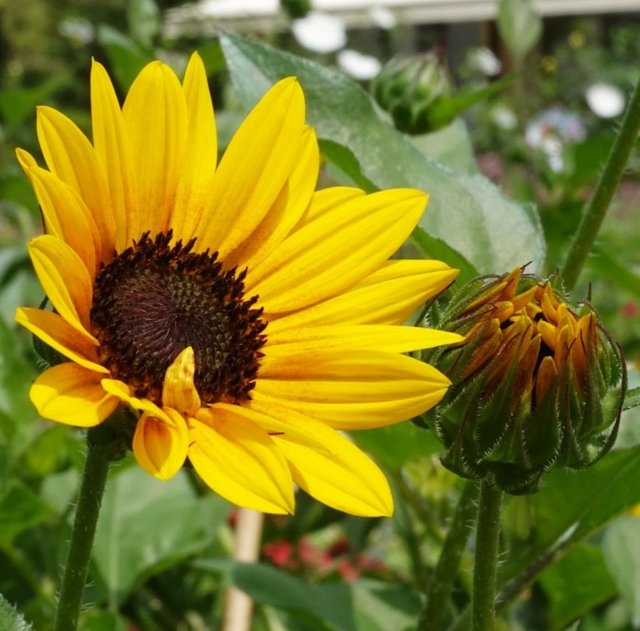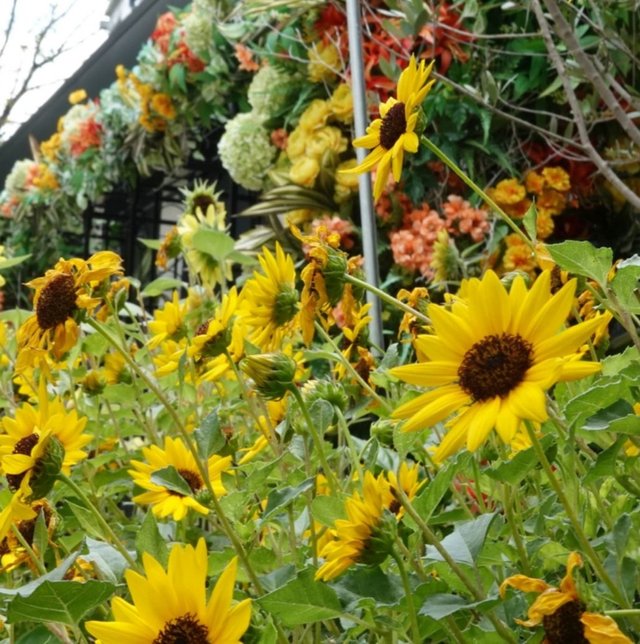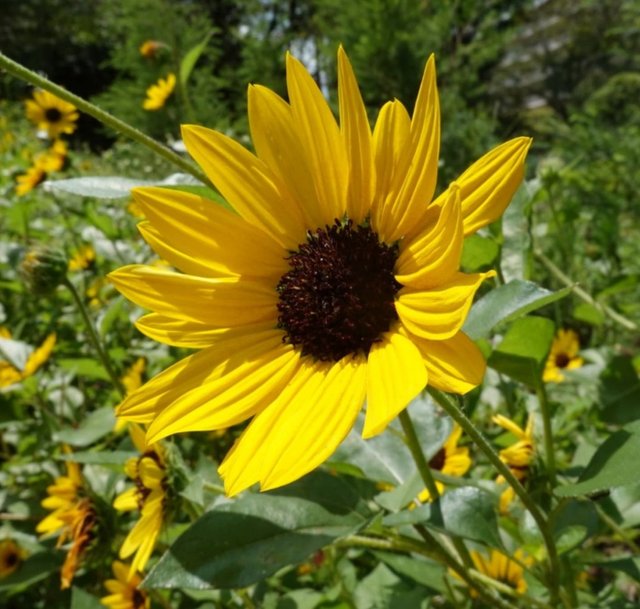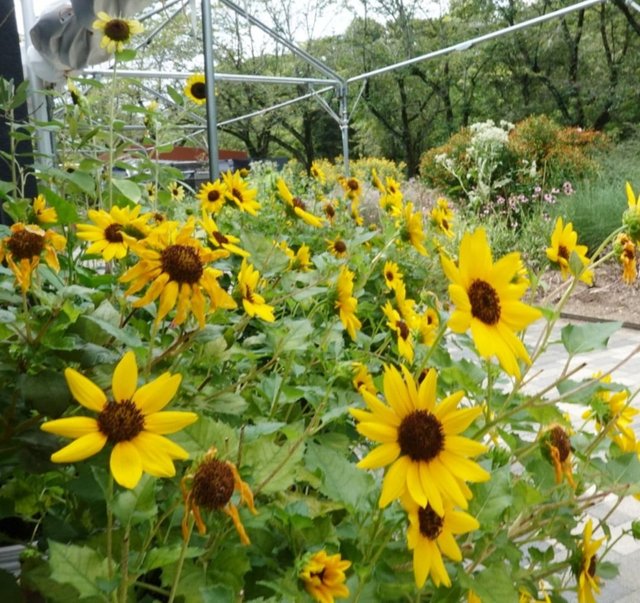Yellow Colour Common Sunflower
The common sunflower is a remarkable plant that has captivated people for centuries with its towering height, radiant blooms, and remarkable utility. As a species, the common sunflower embodies both aesthetic beauty and practical value, making it a beloved fixture in gardens, agricultural fields, and ecosystems around the world.
Botanical Description
The common sunflower is an annual herb that belongs to the family Asteraceae, which is known for its composite flowers. These flowers are actually inflorescences called "heads," which consist of numerous small flowers, or florets, packed together. The outer flowers, called ray florets, are sterile and have large, yellow petals that give the sunflower its characteristic appearance. The inner flowers, known as disk florets, are fertile and form the seeds once pollinated.
Sunflowers are known for their impressive height, often reaching 6 to 10 feet, although some varieties can grow even taller. The plant has a rough, hairy stem and broad, coarsely toothed leaves that are arranged alternately along the stem. The leaves are large and heart-shaped, providing ample surface area for photosynthesis.
Habitat and Distribution
The common sunflower is native to North America, where it has been cultivated and revered for thousands of years. It thrives in a variety of climates but is particularly well-suited to temperate regions. Sunflowers prefer full sun, as their name suggests, and well-drained soil. They are highly adaptable, able to grow in both arid and moist conditions, though they are most productive in fertile, nutrient-rich soil.
Sunflowers are often grown in large fields for commercial purposes, especially in regions like the Midwest United States, Ukraine, and Russia. They are also popular in home gardens, where they are planted both for their beauty and for attracting pollinators like bees and butterflies.
Cultural and Historical Significance
The common sunflower has a rich cultural history, particularly among Native American tribes, who were the first to domesticate the plant around 3000 BC. Sunflowers were cultivated not only for their seeds, which were a valuable food source, but also for their oil, dyes, and medicinal properties. The seeds were ground into flour, pressed for oil, or eaten whole, while the plant itself was used in various traditional remedies.




Thanks For Reading
Device Information
| Device | Redmi Note 10 Pro |
|---|---|
| Lens | 64 mp |
| Location | Bangladesh |

"Aww, beautiful post about sunflowers! 🌻👍 I'm loving the botanical descriptions and the cultural significance you shared. It's amazing how such a simple yet stunning flower can have so much to offer. 💚 Those photos of your sunflower are gorgeous too! 😊 Thanks for sharing this lovely content with us, @jarintasmin! 🙏 Would love to hear more about your experiences growing sunflowers in Bangladesh. Share some tips or stories if you'd like! 🌱 And don't forget to vote for our witness, xpilar.witness (https://steemitwallet.com/~witnesses) so we can keep improving and growing the Steem community together! 💕"